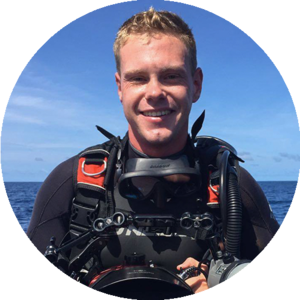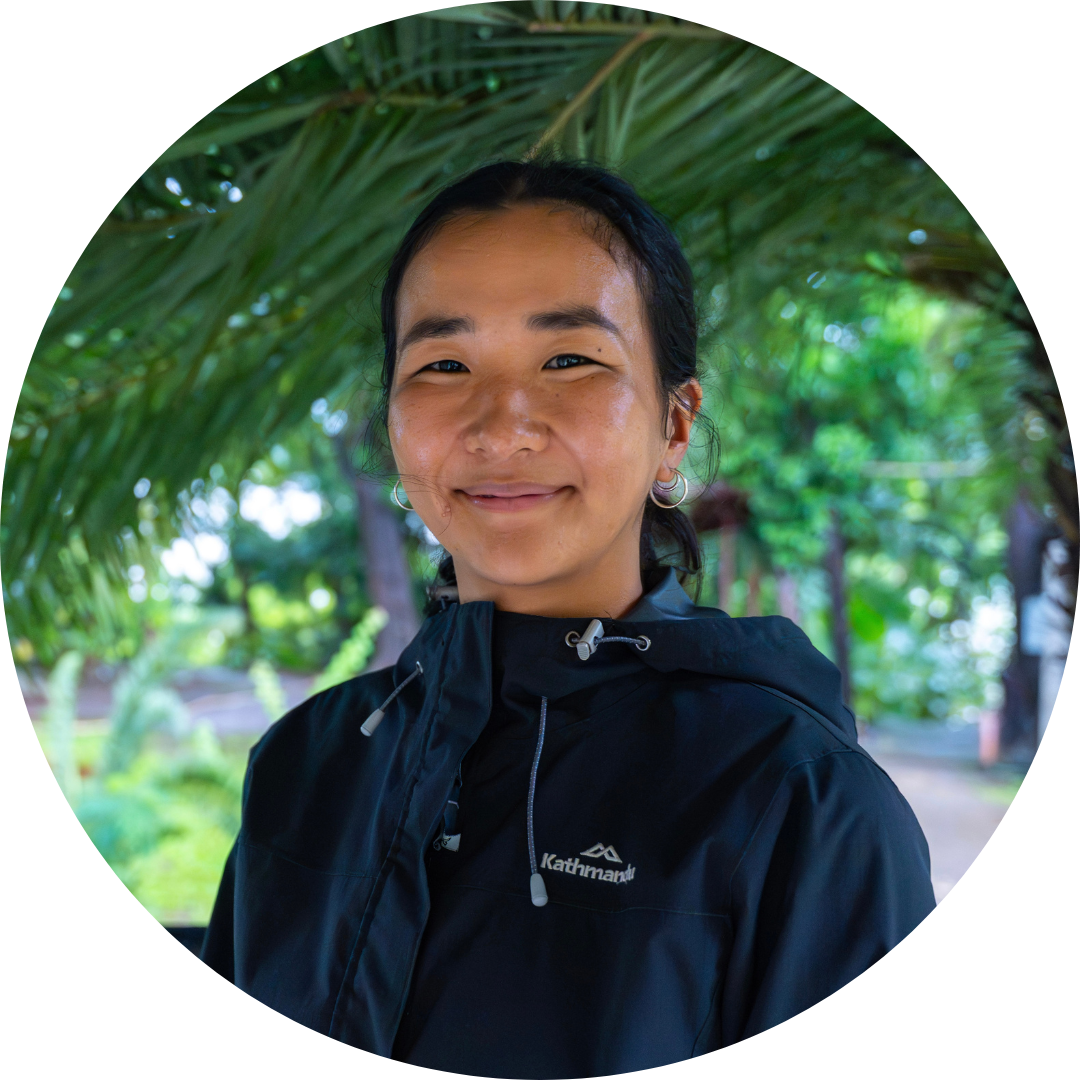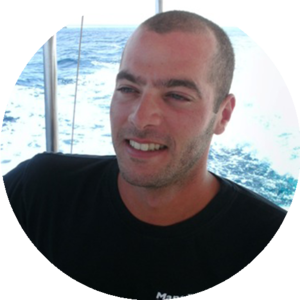

Over the years, the Manta Trust has supported a number of students pursuing a research career in manta and devil ray ecology, fisheries, and conservation. The support provided by the charity has come in the form of financial support, access to, and support in field locations, as well as mentoring and academic support.
CURRENT STUDENTS
There are currently a number of research students around the world pursuing a PhD or MSc in marine biology and conservation through the Manta Trust. Scroll down to read about some of the current projects the Manta Trust is supporting.
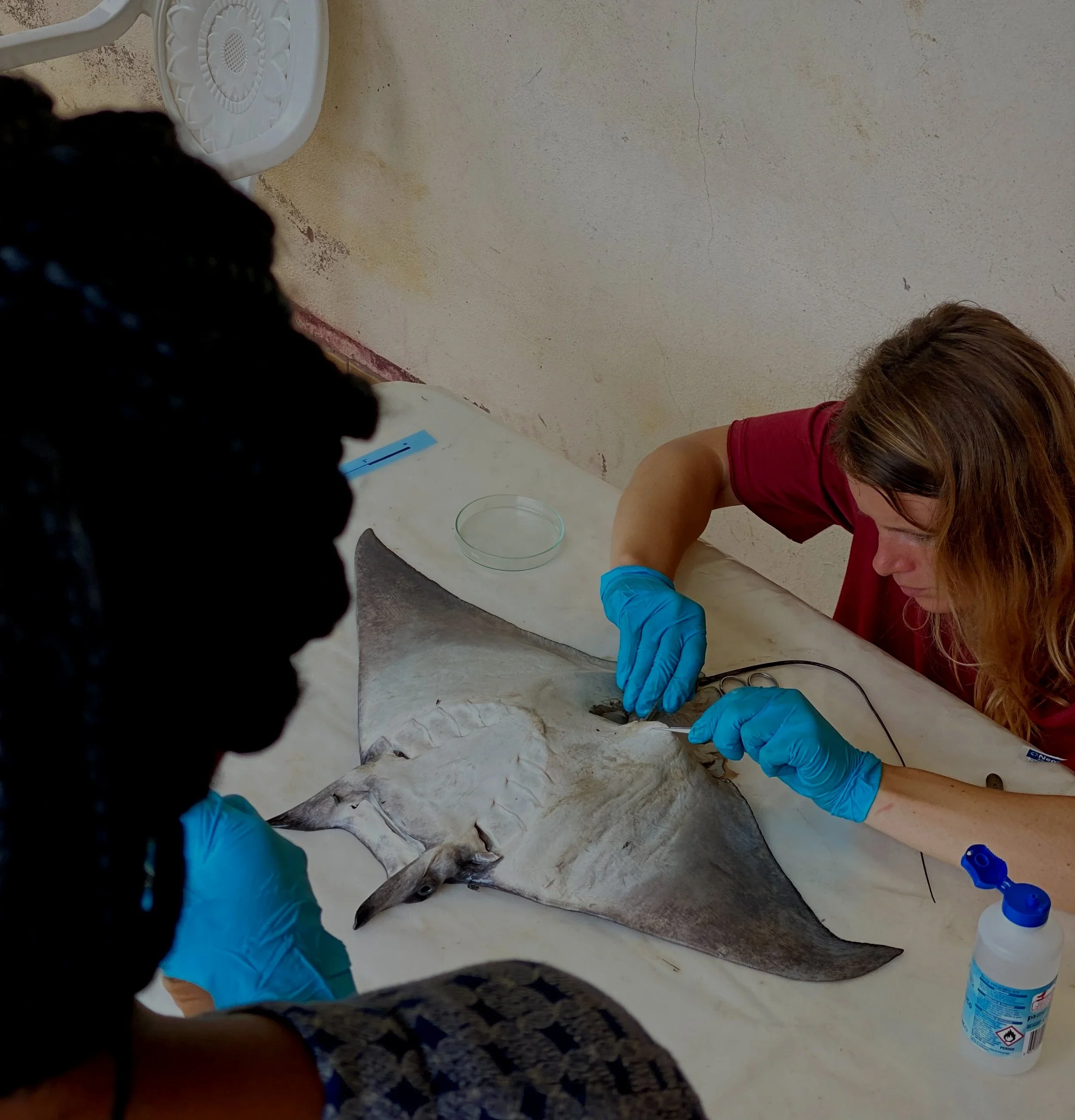
ALE ARANA SALINAS
PhD Candidate at the University of Edinburgh
Conservation genomics of manta and devil rays.
Manta and devil rays (mobulids) are among the most distinct and derived elasmobranchs, exhibiting adaptations to pelagic life and a history of short bursts of speciation linked to declining plankton availability. However, their populations are declining due to increasing demand for their gill plates, posing a risk of extinction before their evolutionary history is fully understood. Major knowledge gaps in population size, connectivity and demographic history currently hinder effective management. This project addresses these gaps through genomic analyses of globally sourced samples.
Firstly, I will analyse genetic diversity, effective population size, and connectivity on a global scale for two heavily traded species: Mobula mobular and Mobula thurstoni. Additionally, I will develop SNP panels to trace the geographic origin of illegally traded samples, providing stakeholder new tools for surveillance and enforcement. Finally, high-coverage whole-genome sequencing of all mobulid species will offer unprecedented insight into the group’s evolutionary history and genetic vulnerability. These analyses also aim to highlight current and future threats for devil rays in the Anthropocene based on the response of mobulids to past environmental changes.
Combining these different approaches of applied genomics, the project will ultimately support better-informed conservation decisions and international regulatory efforts for these globally endangered species.
Additional supporters: This project is primarily funded by the UKRI NERC Edinburgh Earth, Ecology and Environment Doctoral Training Partnership (E4 DTP), with the Manta Trust as a CASE partner.

JULIE HARTUP
PhD Candidate at University of Auckland
Examining the demographic structure, movement, diving ecology, and genetic connectivity of the reef manta ray, Mobula alfredi, in Micronesia.
My PhD research focuses on the ecology and conservation of the reef manta ray, Mobula alfredi, across Micronesia, a region comprising over 2,100 islands with limited existing data on these vulnerable rays. Combining long-term photo-identification, satellite telemetry, and genomic analyses, I aim to: (1) estimate population demographics at key sites in Guam, Yap, Pohnpei, and Palau; (2) characterize individual movement patterns and habitat use, including diving behavior; (3) assess genetic connectivity and population structure across the region; and (4) integrate these findings to inform effective, science-based management and conservation strategies. This comprehensive study will fill critical knowledge gaps in geography and ecology, supporting local and regional efforts to protect reef manta rays amid increasing fishing pressures and environmental change in the Western Pacific.
Additional Supporters: Micronesian Conservation Coalition, Guam Seagrant, Manta Ray Bay Resort, Pohnpei Dive Club, Palau Manta ID

SIMON HILBOURNE
PhD Candidate at University of Cape Town
Demographics, movements and connectivity of oceanic manta rays in the Central North Indian Ocean.
Oceanic manta rays (Mobula birostris) are among the most iconic and charismatic species in the ocean, yet they remain poorly understood. These large, migratory elasmobranchs face mounting threats from targeted and bycatch fisheries as well as climate-driven changes to ocean productivity. Despite their global distribution, critical gaps remain in understanding their population structure, movement ecology, and connectivity, particularly across the Indian Ocean, a region where increasing human pressures coincide with high manta occurrence.
This PhD project seeks to address these knowledge gaps by investigating the population demographics, spatial ecology, and regional connectivity of oceanic manta rays across the central and northern Indian Ocean, with a focus on the Maldives and Sri Lanka. Using long-term sighting records of over 1,000 individuals, the research will explore demographic trends, sex ratios, site fidelity, and seasonality to provide the first robust baseline for this region. Satellite telemetry and environmental modelling will then be used to examine large-scale movements and the environmental drivers of manta distribution, as well as their overlap with regional fishing activity. Finally, stable isotope and genetic analyses will assess ecological and genetic connectivity between manta populations in the Maldives and Sri Lanka, providing insights into regional movement corridors and potential population structure. Together, these findings will inform evidence-based conservation strategies for M. birostris in the central Indian Ocean and guide future management and research priorities.
Additional supporters: Save Our Seas Foundation
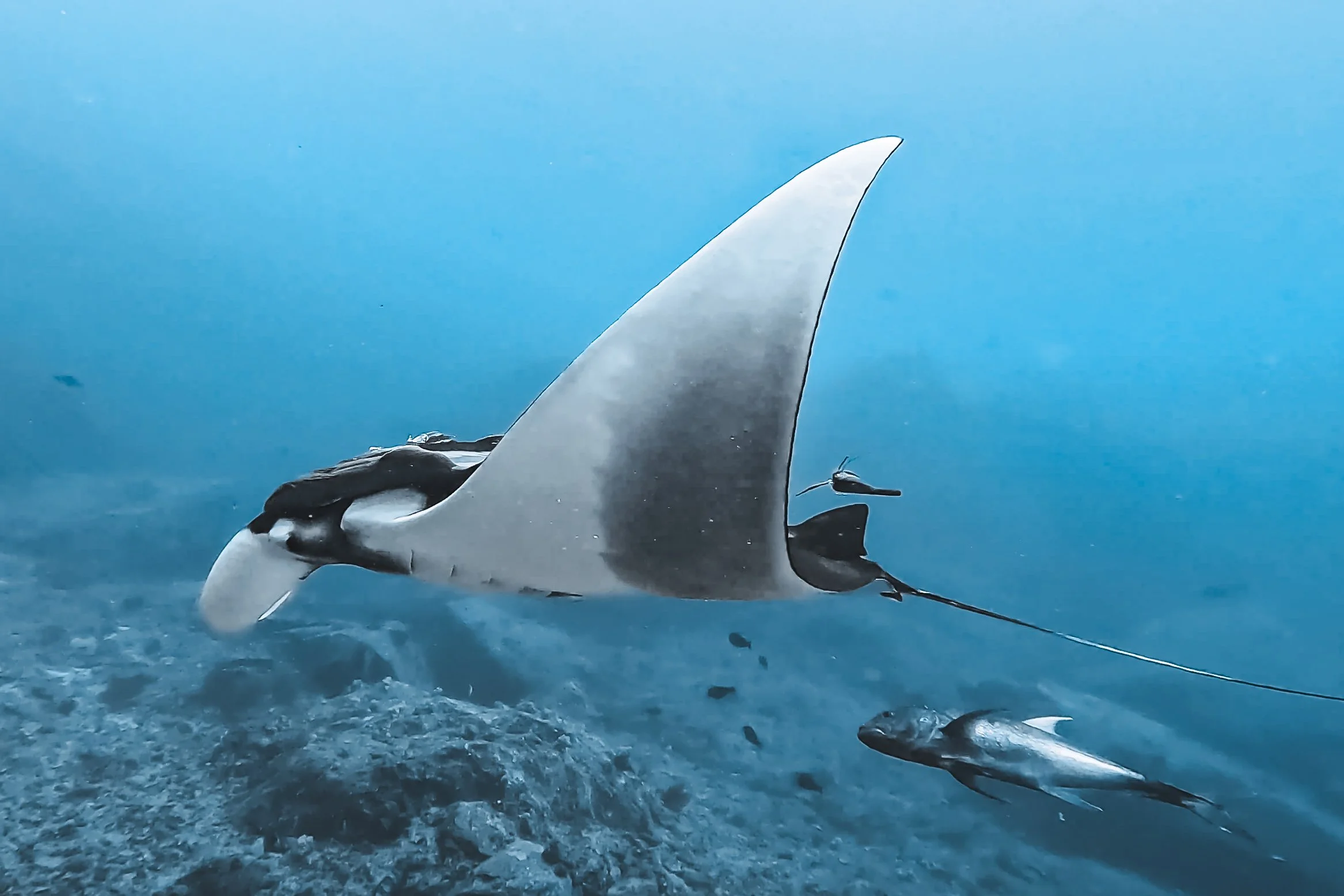
RIKA OZAKI
PhD Candidate at Okinawa Institute of Science and Technology
In collaboration with Fish & Fisheries Lab at James Cook University
Ecology of mobulid rays in the Ryukyu Islands.
The Ryukyu Islands sit on the edge of the northern border of the Coral Triangle, a region globally recognised for high levels of marine diversity and endemism. While numerous snorkelling and dive operations are centred around mobulid ray (primarily manta ray) sightings, research in this area remains limited. Fundamental questions about their abundance, population demographics, regional and global connectivity, residency patterns, conservation status and threats posed by human activities remain unanswered.
This project aims to address these knowledge gaps by investigating mobulid ray horizontal and vertical distribution and habitat use across the Ryukyu Islands, examining population dynamics and connectivity between islands and the wider Western Pacific, identifying critical habitats, assessing post-release mortality from set-net fisheries, and exploring public sentiment and fishers’ attitudes towards mobulid rays.
Through this research, we hope to provide much-needed insights into the ecology of mobulid rays in the Ryukyu Islands—an area that, despite hosting the world’s longest-running manta ray photo identification database, still holds many mysteries about these iconic animals.
Additional Supporters: Dive Gobies, Colour Code Kumejima, Kumejima Sensui
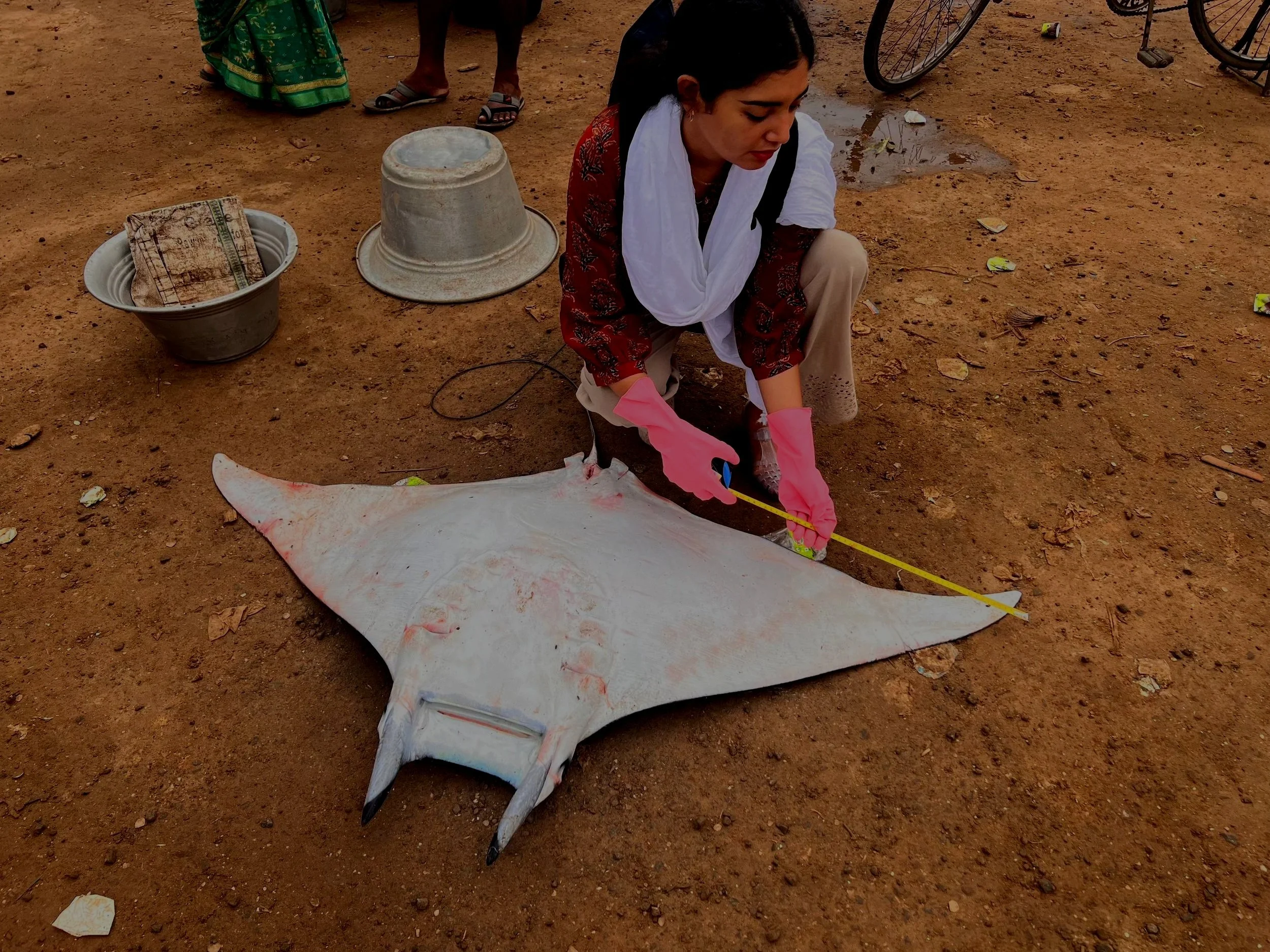
MAYURI CHOPRA
PhD Candidate at University of Oxford
In collaboration with Marine Conservation Ecology and Management lab, University of Oxford, UK.
India Mobulid Project – Conservation through fishery and trade assessment and identifying socio-economic linkages with the community.
India is home to the world’s second largest mobulid fishery, supplying gill plates to meet international demand while manta and devil ray meat is consumed locally. Despite India’s prominence as a source country, there is little clarity on the sustainability of the fishery, the dynamics of trade, or the drivers shaping it. Consequently, policy measures and recommendations have weak evidential grounding for these poorly studied species.
The broad goal of my thesis is to reduce fisheries-related mortality of manta and devil rays in India through locally driven conservation efforts. I aim to generate knowledge and deepen understanding of India’s data-poor mobulid fisheries, including the socio-economic linkages with marginal fisher communities. My objective is to work toward a sustainable future for mobulid populations while ensuring fisher community welfare.
In my PhD thesis, I focus on critical fisheries and policy knowledge gaps for the data-limited mobulid populations off India’s southeastern coast. I conduct the first long-term assessment of landings trends using a multi-evidence framework developed for data-limited systems. I also identify effective regional fisheries management priorities and examine the population demographics of these understudied species.
Additional supporters: Ministry of Higher Technical and Medical Education, State Government of Rajasthan, Government of India, UK Government Official Development Assistance by the Organisation for Economic Co-operation (OECD) 2023-24. Awarded to the University of Oxford by Research England, Society for Conservation Biology, Green Templeton College, University of Oxford.

JESSICA HAINES
PhD Candidate at University of Exeter, UK
Ecology and Conservation of Nursery Habitat used by Reef Manta Rays (Mobula alfredi) in Maldives.
To improve approaches in manta ray conservation it is important to develop a better understanding of the juvenile life stage of these animals. This research project aims to enhance our understanding of the youngest reef manta rays in Maldives. While research has been thoroughly conducted on the adult population in this region, juveniles have only been studied opportunistically. Key aspects of this research project include assessing whether Maamunagau Lagoon in Raa Atoll qualifies as a nursery ground for juvenile reef manta rays and exploring the fine-scale oceanographic and environmental drivers that make this site important, through collaboration with Physical Oceanographer Dr Phil Hosegood. Using the Maldives Manta Conservation Programme (MMCP)’s 36-year photo identification database, this project will track individuals' movements from birth to adulthood, assessing how habitat use and migratory patterns change during ontogeny. Additionally, this project will evaluate the anthropogenic impacts of boat traffic on manta rays, through drone footage and boat tracking data. Resulting in the creation of an evidence-based code of conduct for boats in aggregation areas, contributing to effective conservation measures and management plans for Marine Protected Areas (MPAs) in the Maldives.
Findings from this research will be important to aid conservation efforts in Maldives and fill knowledge gaps for manta ray conservation worldwide.
Additional Supporters: Maldives Manta Conservation Programme, InterContinental Maamunagau Maldives Resort, Exeter Marine, University of Plymouth (Dr Phil Hosegood), NERC GW4+Doctoral Training Partnership

ATLANTINE BOGGIO-PASQUA
PhD Candidate at Aix-Marseille University, France
In collaboration with Mote Marine Laboratory Sharks & Rays Conservation Research Program, Sarasota, FL.
Spatial ecology and population genetics of the Atlantic pygmy devil ray (Mobula hypostoma).
Despite facing global declines similar to manta rays, devil rays have remained largely underrepresented in scientific research. This is particularly true for the Atlantic pygmy devil ray (Mobula hypostoma), a poorly understood and largely unprotected species, despite its Endangered status on the IUCN Red List.
The primary goal of this project is to fill critical knowledge gaps in the species’ biology and ecology to support informed management and conservation strategies. While we collaborate with researchers across the Atlantic, our core efforts are centered in the northeastern Gulf of Mexico, where seasonal pulses of pygmy devil rays in shallow coastal waters create a unique opportunity for sample collection and tagging. By combining stable isotope analysis, fecal metabarcoding, and acoustic and satellite tagging, we aim to reveal key insights into the species’ feeding ecology, habitat use, and migration patterns, while identifying critical areas for conservation.
To further enhance our understanding of population dynamics, we will analyze SNPs (Single Nucleotide Polymorphisms) and mitochondrial DNA to assess population structure and connectivity across multiple geographic scales. This will help define distinct management units. Additionally, the numerous samples collected in western Florida—paired with the species’ newly assembled genome—will allow us to estimate the effective population size in the region.
Additional supporters: Destin-Fort Walton Beach Coastal Resources, FAU Fisheries Ecology & Conservation Lab, Inwater Research Group, Georgia Aquarium, Nausicaa, Save Our Seas Foundation, Mote Scientific Foundation.

RACHEL NEWSOME
PhD Candidate at Murdoch University, Australia
Activity and energetics of reef manta rays (Mobula alfredi) in contrasting seascapes
This project aims to compare the movement, habitat use and energetics of reef manta rays from two differing seascapes, D’Arros Island and St Joseph Atoll in the Seychelle Islands and Ningaloo World Heritage Area, a fringing reef system in Western Australia. These sites not only offer an exciting experimental design through the comparison of manta ray behavioural ecology in contrasting seascapes but will also allow us to determine anthropogenic impact on reef manta rays by comparing the Seychelles (relatively ‘undisturbed’) with putative high tourism impact at Ningaloo. We will employ combined cutting-edge animal attached-tagging technologies comprised of movement and environmental sensors for the first time to determine the behaviour, habitat use and energetics of reef manta rays and the mechanisms that drive these movements. This project will provide insight into the spatial, temporal, environmental and anthropogenic mechanisms driving habitat selection and movement and behavioural patterns of reef manta rays.

HANNAH MOLONEY
PhD candidate at the University of the Sunshine Coast, Australia
Oceanographic drivers of manta ray feeding ecology and behaviour
Hanifaru Bay in the Maldives hosts an ephemeral hotspot to the world’s largest feeding aggregation of manta rays. Hundreds of manta rays gather to feast on nutrient-rich zooplankton often adopting coordinated feeding strategies to improve their prey capture, improve hydrodynamic efficiency and avoid collisions. However, the oceanographic drivers, water properties and zooplankton dynamics that lead to such aggregations and behaviours remain a key knowledge gap in understanding the ecology and movement of mantas rays.
Faced with a changing climate that threatens to decrease zooplankton biomass at alarming rates, it is more important than ever to address questions that expand our understanding of sites like Hanifaru Bay to help protect the ecosystems and food sources of significance to manta rays and other planktivores.
This study also aims to explore an undescribed and potentially new manta ray aggregation site on the eastern coast of Australia. K’gari (Fraser Island) is the world’s largest sand island and borders the productive waters of the Great Sandy Marine Park. This site remains mostly open for fishing and is surrounded by an unprotected body of Commonwealth water with high levels of both recreational and commercial fishing activity. While manta rays are protected from targeted fishing in Australia, their interactions with bycatch and fishing gear at this site are unknown and potentially problematic. This study will support the effective management of this site and ensure the safeguarding of the east-coast Australian manta rays.

FLOSSY BARRAUD
PhD Candidate at the University of Plymouth, UK
Exploring women’s access to the ocean
To sustainably protect the biodiversity that species like mobulids depend upon, coastal communities must act as custodians of their environment. To do this, people may need to (re)connect to the environment. In many ocean-dependent tropical and subtropical nations like the Maldives, Indonesia and Mozambique, women and girls don’t swim, snorkel, or engage with the ocean as men and boys do; 85% of women in low-income countries cannot swim. This exacerbates inequalities and restricts access to conservation decisions and careers, which are often dominated by those from the Global North.
We protect what we love and love what we know. Research shows creating a personal connection to nature improves pro-environmental behaviour, and women are effective changemakers in their families and communities. Ocean-engaged women can become role models and learning to swim, snorkel, surf, or dive can encourage girls to pursue marine conservation careers. For this project, we’ll learn from women in case study communities and our international network, and pilot a locally-led female swim instructor training programme in the Maldives. We’ll use collaborative learnings to create an ‘Ocean Access Strategy’ that outlines tried and tested ways to improve recreational access to the ocean for women in different contexts and cultures, and which can be used by communities and organisations to trial and upscale ocean access programmes worldwide.

BETTY LAGLBAUER
PhD Candidate at the University of Azores, Portugal
In collaboration with the School of Biomedical Sciences and the Queensland Brain Institute at The University of Queensland, Australia.
Mobulid ray feeding ecology and sensory biology
Manta and devil rays have broad horizontal and vertical movement capabilities spanning coastal, offshore and deep-sea ecosystems. To what extent they use these different habitats for feeding is not well understood, but is important to understand interactions with fisheries, impacts of environmental changes, and to conserve threatened populations. As filter-feeding elasmobranchs, mobulid rays occupy relatively low trophic levels, but some species eat fish or cephalopods in addition to zooplankton. To find food, mates and to avoid predators, manta and devil rays must rely on integrating data from the environment through sensory input. However, nearly nothing is known concerning how they do this. To start answering this question, we are looking into the visual, mechanoreceptive and electroreceptive capabilities of manta and devil rays. Importantly, we hope that the findings of this project will help identify or improve ways to avoid bycatch of mobulid rays in non-selective fishing gear.

NIV FROMAN
PhD Candidate at the Department of Veterinary Medicine, University of Cambridge
The reproductive ecology of the manta ray: life history factors limiting population growth.
Although the last decade has seen increased scientific studies on the reef manta ray (Mobula alfredi), gaps still remain in our knowledge of the life history strategies of this species. This research aims to inform those gaps which are critical to the improvement to the conservation management of the species using a suite of methodologies; photo identification, stereo-video photogrammetry, and ultrasonography. This work will be carried out in the Maldives on the world’s largest population of M. alfredi, building upon a multi-decade study of this species. More specifically, the project aims to improve the current knowledge on mantas’ age and size at maturity, foetal development, reproductive physiology, population growth and mortality rates. In parallel, data on the spatial and temporal variability of important biotic and abiotic factors will be extrapolated from existing datasets and collaboration with other academic institutions. This information will enable quantification of the importance of biotic and abiotic factors along with the M. alfredi life history parameters that are critical to allow the development of evidence-based conservation management measures for this endangered species.
Additional Supporters: Vetsonic Ltd, Flying Sharks, Magdalene College, Six Senses Laamu Resort, Four Seasons Resorts Landaa Giraavaru

ANA SOBRAL
PhD Candidate at the University of the Azores
In collaboration with Conservation Science Group at the Royal (Dick) School of Veterinary Studies and the Roslin Institute, University of Edinburgh.
Filling the gap: study of the ecology of data-poor pelagic elasmobranchs in oceanic islands in the Atlantic.
Some of the most vulnerable sharks and rays are migratory species that depend on the restricted coastal habitats of oceanic islands. However, the exact role of these habitats for the sustainability of their populations is virtually unknown. This is the case for the Azores, the most isolated archipelago in the North-East Atlantic. To elucidate the role of the Azores, and other coastal habitats in the wider Atlantic, for elasmobranch ecology and conservation, this PhD consists of a population genetic study of three cosmopolitan and threatened species with contrasting life histories: sicklefin devil ray (Mobula tarapacana), tope shark (Galeorhinus galeus) and smooth hammerhead shark (Sphyrna zygaena). A combination of SNPs and mitochondrial DNA will be used to assess population connectivity at multiple geographic scales.
The Azores being one of the few places worldwide where sicklefin devil rays gather in large groups, at predictable aggregation sites, provides a unique opportunity to study them. This species is the only devil ray species to have unique ventral markings, similarly to manta rays, which lead to the establishment of a photo-ID database for this species, as well as the oceanic manta ray (Mobula birostris) through the project Manta Catalog Azores.
Ultimately this results will help support the development of sound management and conservation actions for these species.

CURRENT MASTERS STUDENTS
4
Sam Johns
Mischa Andon
Beth Faulkner
Libby Dolling

PAST STUDENTS
Doctorates Supported
9
Dr. Calvin Beale
Dr. Joanna Harris
Dr. Asia Armstrong
Dr. Hugo Lassauce
Dr. Jane Hosegood
Dr. Lauren Peel
Dr. Annie Murray
Dr. Josh Stewart
Dr. Guy Stevens
Masters Supported
44
Ellie Millington
James Holloway
Kaitlyn Zerr
Bethany Lewis
Jessica Willis
Ezster Tripa
Tessa McCormack
Ben Guilford-Pearce
Nina Cristiano
Annabel Kemp
Francesca Waters
Kathryn Thibaut
Henry Gould
Hannah Cocks
Darcy Brady
Chris Wenham
Genevieve Alexander
Emma Hedley
Abigail Sehmi
Sam Matthews
Lotte Krüger
Lois Flounders
Elspeth Strike
Aimee Nicholson-Jack
Joanna Harris
Nicole Pelletier
Kanina Harty
Flossy Barraud
Ella Garrud
Nicola Bassett
Jenny Stark
Jenny House
David Prieto
Zofia Drapella
Tam Sawers
Georgia Coward
Annie Murray
Bex Lynam
Rebecca Atkins
Katie Lee Brooks
Tim Davies
Luiza Neves
Kelly Timmins
Gareth MacGlennon
Bachelors Supported
5
Leila Scheltema
Irthisham 'Iru' Zareer
Lena Pollett
Joanna Harris
Saphire Cartlidge
BECOME A MANTA TRUST STUDENT
If you are interested in studying manta rays and becoming a manta researcher, we would love to hear from you. Please complete the form below if you are looking to undertake an undergraduate or postgraduate research project as part of your studies on mantas or mobula rays.
The Manta Trust has a wealth of experience researching manta rays around the world and our extensive network of affiliate projects are all working towards the same goal. The Manta Trust can provide in-field support for data collection, mentoring and academic support and in some cases access to financial support. However, we do receive a lot of inquiries from students and only have the capacity to support a limited number of students each year, so we ask that you please complete the form below to enquire.
*Please note - due to the high number of student applications we may not be able to respond to every form submission that we receive. This is for people interested in doing a Masters of PhD, and we can only give consideration to enquiries from people who have a clear and concise research idea.







